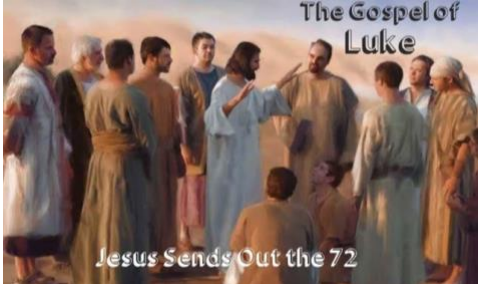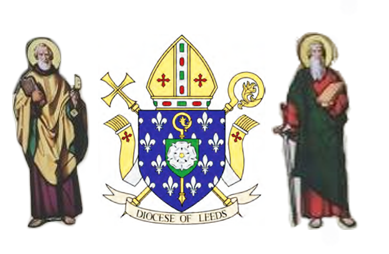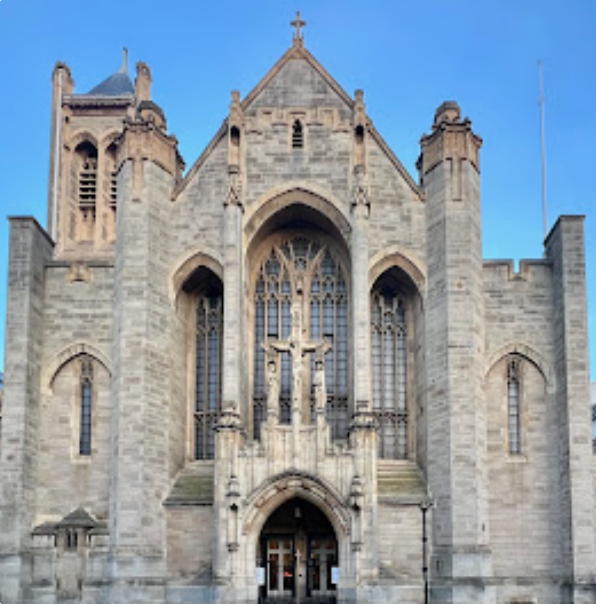Called by the Lord himself, by the Risen One, to be a true Apostle, is Paul of Tarsus. He shines like a star of the brightest magnitude in the Church’s history, and not only in that of its origins. St. John Chrysostom praised him as a person superior even to many angels and archangels.1
Certainly, after Jesus, he is one of the originals of whom we have the most information. In fact, we possess not only the account that Luke gives in the Acts of the Apostles, but also a group of Letters that have come directly from his hand and which, without intermediaries, reveal his personality and thought.
Luke tells us that his name originally was Saul,2 in Hebrew also Saul,3 like King Saul,4 and he was a Jew of the Diaspora, since the city of Tarsus is situated between Anatolia and Syria.
Very soon he went to Jerusalem to study the roots of Mosaic Law in the footsteps of the great Rabbi Gamaliel.5 He also learned a manual and common trade, tent making,6 which later permitted him to provide personally for his own support without being a weight on the Churches.7
It was decisive for him to know the community of those who called themselves disciples of Jesus. Through them he came to know a new faith — a new ”way,” as it was called — that places not so much the Law of God at the center but rather the person of Jesus, Crucified and Risen, to whom was now linked the remission of sins.
It was precisely on the road to Damascus at the beginning of the 30s A.D. that, according to his words, ”Christ made me his own.”8 While Luke recounts the fact with abundant detail — like how the light of the Risen One touched him and fundamentally changed his whole life — in his Letters he goes directly to the essential and speaks not only of a vision,9 but of an illumination,10 and above all of a revelation and of a vocation in the encounter with the Risen One.11
In fact, he will explicitly define himself as ”apostle by vocation”12 or ”apostle by the will of God,”13 as if to emphasize that his conversion was not the result of a development of thought or reflection, but the fruit of divine intervention, an unforeseeable, divine grace.
Henceforth, all that had constituted for him a value paradoxically became, according to his words, a loss and refuse.14 And from that moment all his energy was placed at the exclusive service of Jesus Christ and his Gospel.
From here we draw a very important lesson: what counts is to place Jesus Christ at the center of our lives, so that our identity is marked essentially by the encounter, by communion with Christ and with his Word.
Another fundamental lesson offered by Paul is the universal breadth that characterizes his apostolate. Acutely feeling the problem of the Gentiles, of the pagans, to know God, who in Jesus Christ Crucified and Risen offers salvation to all without exception, he dedicates himself to make this Gospel — literally, ”good news” — known, to announce the grace destined to reconcile men with God, self and others.
From the first moment he understood that this is a reality that did not concern only the Jews or a certain group of men, but one that had a universal value and concerned everyone, because God is the God of everyone.
The point of departure for his travels was the Church of Antioch in Syria, where for the first time the Gospel was announced to the Greeks and where also the name ”Christians” was coined for believers in Christ.15
From there he first went to Cyprus and then on different occasions to the regions of Asia Minor (Pisidia, Laconia, Galatia), and later to those of Europe (Macedonia, Greece). The most famous were the cities of Ephesus, Philippi, Thessalonica and Corinth, without forgetting Berea, Athens and Miletus.
In Paul’s apostolate difficulties were not lacking, which he faced with courage for love of Christ.
From a passage of the Letter to the Romans16 appears his proposal to push on even to Spain, to the Far West, to announce the Gospel everywhere, even to the then-known ends of the earth.
It is clear that he would not have been able to face such difficult and at times desperate situations if he did not have a reason of absolute value, before which no limit could be considered insurmountable. For Paul, this reason, as we know, is Jesus Christ, of whom he writes: ”The love of Christ impels us . . . so that those who live might live no longer for themselves but for him who for their sake died and was raised,”17 for us, for all.
In fact, the Apostle renders the supreme witness of blood under the Emperor Nero in Rome, where we keep and venerate his mortal remains. Clement of Rome, my predecessor to this Apostolic See, wrote of him in the last years of the first century: ”Because of jealousy and discord, Paul was obliged to show us how one obtains the prize of patience. . . . After preaching justice to all in the world, and after having arrived at the limits of the West, he endured martyrdom before the political rulers; in this way he left this world and reached the holy place, thus becoming the greatest model of perseverance.”18
St. Paul’s New Outlook19
In St. Paul’s Letters, after the Name of God which appears more than 500 times, the name most frequently mentioned is Christ’s (380 times). Thus, it is important to realize what a deep effect Jesus Christ can have on a person’s life, hence, also on our own lives.
Looking at Paul, this is how we could formulate the basic question: how does a human being’s encounter with Christ occur? And of what does the relationship that stems from it consist? The answer given by Paul can be understood in two stages.
In the first place, Paul helps us to understand the absolutely basic and irreplaceable value of faith. This is what he wrote in his Letter to the Romans: ”We hold that a man is justified by faith apart from works of law.”20
This is what he also wrote in his Letter to the Galatians: ”[M]an is not justified by works of the law but only through faith in Jesus Christ; even we have believed in Christ Jesus, in order to be justified by faith in Christ, and not by works of the law, because by works of the law shall no one be justified.”21
”Being justified” means being made righteous, that is, being accepted by God’s merciful justice to enter into communion with him and, consequently, to be able to establish a far more genuine relationship with all our brethren: and this takes place on the basis of the complete forgiveness of our sins.
Well, Paul states with absolute clarity that this condition of life does not depend on our possible good works but on the pure grace of God: ”[We] are justified by his grace as a gift, through the redemption which is in Christ Jesus.”22 With these words St. Paul expressed the fundamental content of his conversion, the new direction his life took as a result of his encounter with the Risen Christ.
Before his conversion, Paul had not been a man distant from God and from his Law. On the contrary, he had been observant, with an observance faithful to the point of fanaticism. In the light of the encounter with Christ, however, he understood that with this he had sought to build up himself and his own justice, and that with all this justice he had lived for himself.
Paul, therefore, no longer lives for himself, for his own justice. He lives for Christ and with Christ: in giving of himself, he is no longer seeking and building himself up.
Before the Cross of Christ, the extreme expression of his self-giving, there is no one who can boast of himself, of his own self-made justice, made for himself! Elsewhere, re-echoing Jeremiah, Paul explains this thought, writing, ”Let him who boasts, boast of the Lord”23 or ”Far be it from me to glory except in the Cross of Our Lord Jesus Christ, by which the world has been crucified to me, and I to the world.”24
In reflecting on what justification means, not for actions but for faith, we thus come to the second component that defines the Christian identity described by St. Paul in his own life.
This Christian identity is composed of precisely two elements: this restraint from seeking oneself by oneself but instead receiving oneself from Christ and giving oneself with Christ, thereby participating personally in the life of Christ to the point of identifying with him and sharing both his death and his life. This is what Paul wrote in his Letter to the Romans: ”[A]ll of us . . . were baptized into his death . . . we were buried therefore with him . . . we have been united with him. . . . So you also must consider yourselves dead to sin and alive to God in Christ Jesus.”25
These last words themselves are symptomatic: for Paul, in fact, it was not enough to say that Christians are baptized or believers; for him, it was just as important to say they are ”in Christ Jesus.”26
In fact, although faith unites us closely to Christ, it emphasizes the distinction between us and him; but according to Paul, Christian life also has an element that we might describe as ”mystical,” since it entails an identification of ourselves with Christ and of Christ with us. In this sense, the Apostle even went so far as to describe our suffering as ”the suffering of Christ” in us,27 so that we might ”always [carry] in the body the death of Jesus, so that the life of Jesus may also be manifested in our bodies.”28
We must fit all this into our daily lives by following the example of Paul, who always lived with this great spiritual range. Besides, faith must constantly express humility before God, indeed, adoration and praise.
Indeed, it is to him and his grace alone that we owe what we are as Christians. Since nothing and no one can replace him, it is necessary that we pay homage to nothing and no one else but him.
Moreover, our radical belonging to Christ and the fact that ”we are in him” must imbue in us an attitude of total trust and immense joy. In short, we must indeed exclaim with St. Paul: ”If God is for us, who is against us?”29 And the reply is that nothing and no one ”will be able to separate us from the love of God in Christ Jesus our Lord.”30 Our Christian life, therefore, stands on the soundest and safest rock one can imagine. And from it we draw all our energy, precisely as the Apostle wrote: ”I can do all things in him who strengthens me.”31
Therefore, let us face our life with its joys and sorrows supported by these great sentiments that Paul offers to us.
We have before us a giant, not only in terms of his actual apostolate but also of St. Paul’s extraordinarily pro-found and stimulating theological teaching.
St. Paul and the Spirit32
After meditating last on what Paul wrote about the central place that Jesus Christ occupies in our life of faith, now let us look at what he said about the Holy Spirit and about his presence in us, because here too, the Apostle has something very important to teach us.
We know what St. Luke told us of the Holy Spirit from his description of the event of Pentecost in the Acts of the Apostles. The Spirit of Pentecost brought with him a strong impulse to take on the commitment of the mission in order to witness to the Gospel on the highways of the world.
In his Letters, however, St. Paul also spoke to us of the Spirit. He did not end by describing solely the dynamic and active dimension of the Third Person of the Blessed Trinity, but also analyzed his presence in the lives of Christians, which marks their identity.
In other words, in Paul’s reflection on the Spirit he not only explained his influence on the action of Christians, but also on their being. Indeed, it is he who said that the Spirit of God dwells in us33 and that ”God has sent the Spirit of his Son into our hearts.”34
In Paul’s opinion, therefore, the Spirit stirs us to the very depths of our being. Here are some of his words on this subject which have an important meaning: ”For the law of the Spirit of life in Christ Jesus has set me free from the law of sin and death . . . you did not receive the spirit of slavery to fall back into fear, but you have received the spirit of sonship. When we cry, ‘Abba! Father!’ it is the Spirit himself”35 who speaks in us because, as children, we can call God ”Father.”
Thus, we can see clearly that even before he does anything, the Christian already possesses a rich and fruitful interiority, given to him in the Sacra- ments of Baptism and Confirmation, an interiority which establishes him in an objective and original relationship of sonship with God. This is our greatest dignity: to be not merely images but also children of God.
God considers us his children, having raised us to a similar if not equal dignity to that of Jesus himself, the one true Son in the full sense. Our filial condition and trusting freedom in our relationship with the Father is given or restored to us in him.
We thus discover that for Christians the Spirit is no longer only the ”Spirit of God,” as He is usually described in the Old Testament and as people continue to repeat in Christian language.36 Nor is He any longer simply a ”Holy Spirit” generically understood, in the manner of the Old Testament,37 and of Judaism itself in its writings.38
Indeed, the confession of an original sharing in this Spirit by the Risen Lord, who himself became a ”life-giving Spirit,”39 is part of the specificity of the Christian faith.
For this very reason, St. Paul spoke directly of the ”Spirit of Christ,”40 of the ”Spirit of his Son”41 or of the ”Spirit of Jesus Christ.”42
Paul teaches us another important thing: he says that there is no true prayer without the presence of the Spirit within us. He wrote: ”The Spirit helps us in our weakness; for we do not know how to pray as we ought, but the Spirit himself intercedes for us with sighs too deep for words.
It is as if to say that the Holy Spirit, that is, the Spirit of the Father and of the Son, is henceforth as it were the soul of our soul, the most secret part of our being, from which an impulse of prayer rises ceaselessly to God, whose words we cannot even begin to explain.
In fact, the Spirit, ever alert within us, completes what is lacking in us and offers to the Father our worship as well as our deepest aspirations.
This, of course, requires a degree of great and vital communion with the Spirit. It is an invitation to be increasingly sensitive, more attentive to this presence of the Spirit in us, to transform it into prayer, to feel this presence and thus to learn to pray, to speak to the Father as children in the Holy Spirit.
There is also another typical aspect of the Spirit which St. Paul teaches us: his connection with love.
In my Encyclical Letter Deus Caritas Est, I cited a most eloquent sentence of St. Augustine: ”If you see charity, you see the Trinity,”43 and I continued by explaining: ”The Spirit, in fact, is that interior power which harmonizes [believers’] hearts with Christ’s Heart and moves them to love their brethren as Christ loved them.”44 The Spirit immerses us in the very rhythm of divine life, which is a life of love, enabling us to share personally in relations between the Father and the Son. It is not without significance that when Paul lists the various elements that constitute the fruit of the Spirit he puts love first: ”the fruit of the Spirit is love, joy, peace,” etc.45
And since by definition, love unites, this means first of all that the Spirit is the creator of communion within the Christian community, as we say at the beginning of Mass, borrowing Paul’s words: ”May the fellowship of the Holy Spirit [that is, what he brings about] be with you all.”46
Furthermore, however, it is also true that the Spirit stimulates us to weave charitable relations with all people. Therefore, when we love we make room for the Spirit and give him leeway to express himself fully within us.
We thus understand why Paul juxtaposes in the same passage of his Letter to the Romans the two exhortations: ”Be aglow with the Spirit” and ”Repay no one evil for evil.”47 Finally, according to St. Paul, the Spirit is a generous down payment given to us by God himself as a deposit and at the same time, a guarantee of our future inheritance.48
St. Paul and the Church49
We cannot take our leave of St. Paul without considering one of the decisive elements of his activity and one of the most important subjects of his thought: the reality of the Church.
We must first of all note that his initial contact with the Person of Jesus happened through the witness of the Christian community of Jerusalem. It was a turbulent contact. Having met the new group of believers, he immediately became a fierce persecutor of it. He acknowledged this himself at least three times in as many of his Letters: ”I persecuted the Church of God,”50 as if to describe his behavior as the worst possible crime.
History shows us that one usually reaches Jesus by passing through the Church! In a certain sense, this proved true, we were saying, also for Paul, who encountered the Church before he encountered Jesus. In his case, however, this contact was counterproductive; it did not result in attachment but violent rejection.
For Paul, adherence to the Church was brought about by a direct intervention of Christ, who in revealing himself on the road to Damascus identified himself with the Church and made Paul realize that persecution of the Church was persecution of himself, the Lord.
In fact, the Risen One said to Paul, persecutor of the Church: ”Saul, Saul, why do you persecute me?”51 In persecuting the Church, he was persecuting Christ.
Paul, therefore, was at the same time converted to Christ and to the Church. This leads one to understand why the Church later became so present in Paul’s thoughts, heart and activity.
In the first place, she was so present that he literally founded many Churches in the various cities where he went as an evangelizer.
He felt bound to the Communities he founded in a way that was far from cold and bureaucratic but rather intense and passionate. Thus, for example, he described the Philippians as ”my brethren, whom I love and long for, my joy and crown.”52
On other occasions he compared the various Communities to a letter of recommendation, unique in its kind: ”You yourselves are our letter of recommendation, written on your hearts, to be known and read by all men.”53
At yet other times, he showed a real feeling for them that was not only paternal but also maternal, such as when he turned to those he was addressing, calling them: ”My little children, with whom I am again in travail until Christ be formed in you.”54
Paul also illustrates for us in his Letters his teaching on the Church as such. Thus, his original definition of the Church as the ”Body of Christ,” which we do not find in other Christian authors of the first century, is well known.55
We find the deepest root of this surprising designation of the Church in the Sacrament of the Body of Christ. St. Paul said: ”Because there is one bread, we who are many are one body.”56 In the same Eucharist, Christ gives us His Body and makes us His Body. Concerning this, St. Paul said to the Galatians: ”You are all one in Christ.”57 By saying all this, Paul makes us understand that not only does the belonging of the Church to Christ exist, but also a certain form of equality and identification of the Church with Christ himself.
From this, therefore, derive the greatness and nobility of the Church, that is, of all of us who are part of her: from our being members of Christ, an extension as it were of his personal presence in the world. And from this, of course, stems our duty to truly live in conformity with Christ.
Paul’s exhortations concerning the various charisms that give life and structure to the Christian community also derive from this.
It is important, however, that all the charisms cooperate with one another for the edification of the community and do not instead become the cause of a rift.
In this regard, Paul asked himself rhetorically: ”Is Christ divided?”58 He knows well and teaches us that it is necessary to ”maintain the unity of the Spirit in the bond of peace. There is one body and one Spirit, just as you were called to the one hope that belongs to your call.”59
Obviously, underlining the need for unity does not mean that ecclesial life should be standardized or leveled out in accordance with a single way of operating. Elsewhere, Paul taught: ”Do not quench the Spirit,”60 that is, make room generously for the unforeseeable dynamism of the charismatic manifestations of the Spirit, who is an ever new source of energy and vitality.
But if there is one tenet to which Paul stuck firmly it was mutual edification: ”Let all things be done for edification.”61 Everything contributes to weaving the ecclesial fabric evenly, not only without slack patches but also without holes or tears.
Then, there is also a Pauline Letter that presents the Church as Christ’s Bride.62 With this, Paul borrowed an ancient prophetic metaphor which made the People of Israel the Bride of the God of the Covenant.63 He did so to express the intimacy of the relationship between Christ and his Church, both in the sense that she is the object of the most tender love on the part of her Lord, and also in the sense that love must be mutual and that we too therefore, as members of the Church, must show him passionate faithfulness.
Thus, in short, a relationship of communion is at stake: the so to speak vertical communion between Jesus Christ and all of us, but also the horizontal communion between all who are distinguished in the world by the fact that they ”call on the name of Our Lord Jesus Christ.”64
This is our definition: we belong among those who call on the Name of the Lord Jesus Christ. Therefore, we clearly understand how desirable it is that what Paul himself was hoping for when he wrote to the Corinthians should come to pass: ”If an unbeliever or an uninitiated enters while all are uttering prophecy, he will be taken to task by all and called to account by all, and the secrets of his heart will be laid bare. Falling prostrate, he will worship God, crying out, ‘God is truly among you.’ ”65
Our liturgical encounters should be like this. A non-Christian who enters one of our assemblies ought finally to be able to say: ”God is truly with you.” Let us pray to the Lord to be like this, in communion with Christ and in communion among ourselves. TP
St. Paul’s Epistles
Pauline Letters
These letters, which comprise approximately one-fourth of the New Testament, are primary and monumental sources of the development of Christian theology. Several of them may not have had Paul as their actual author, but evidence of the Pauline tradition behind them is strong. The letters to the Colossians, Philippians, Ephesians and Philemon have been called the ”Captivity Letters” because of a tradition that they were written while Paul was under house arrest or another form of detention.
Romans : Written about 57, probably from Corinth, on the central significance of Christ and faith in him for salvation, and the relationship of Christianity to Judaism; the condition of mankind without Christ; justification and the Christian life; duties of Christians.
Corinthians 1 : Written near the beginning of 57 from Ephesus to counteract factionalism and disorders, it covers community dissension, moral irregularities, marriage and celibacy, conduct at religious gatherings, the Eucharist, spiritual gifts (charisms) and their function in the Church, charity, the resurrection of the body.
Corinthians 2 : Written later in the same year as 1 Cor, concerning Paul’s defense of his apostolic ministry, and an appeal for a collection to aid poor Christians in Jerusalem.
Galatians : Written probably between 54 and 55 to counteract Judaizing opinions and efforts to undermine his authority, it asserts the divine origin of Paul’s authority and doctrine, states that justification is not through Mosaic Law but through faith in Christ, insists on the practice of evangelical virtues, especially charity.
Ephesians : Written probably between 61 and 63, mainly on the Church as the Mystical Body of Christ.
Philippians : Written between 56 and 57 or 61 and 63 to warn the Philippians against enemies of their faith, to urge them to be faithful to their vocation and unity of belief, and to thank them for their kindness to him while he was being held in detention.
Colossians : Written probably while he was under house arrest in Rome from 61 to 63, to counteract the influence of self-appointed teachers who were watering down doctrine concerning Christ. It includes two highly important Christological passages, a warning against false teachers, and an instruction on the ideal Christian life.
Thessalonians 1 and 2 : Written within a short time of each other probably in 51 from Corinth, mainly on doctrine concerning the Parousia, the second coming of Christ.
Timothy 1 and 2, Titus : Written between 65 and 67, or perhaps in the 70s, giving pastoral counsels to Timothy and Titus, who were in charge of churches in Ephesus and Crete, respectively. 1 Tm emphasizes pastoral responsibility for preserving unity of doctrine; 2 Tm describes Paul’s imprisonment in Rome.
Philemon : A private letter written between 61 and 63 to a wealthy Colossian concerning a slave, Onesimus, who had escaped from him; Paul appealed for kind treatment of the man.
Hebrews : Dating from sometime between 70 and 96, a complex theological treatise on Christology, the priesthood and sacrifice of Christ, the New Covenant, and the pattern for Christian living. Critical opinion is divided as to whether it was addressed to Judaeo or Gentile Christians.
The Pauline Epistles











